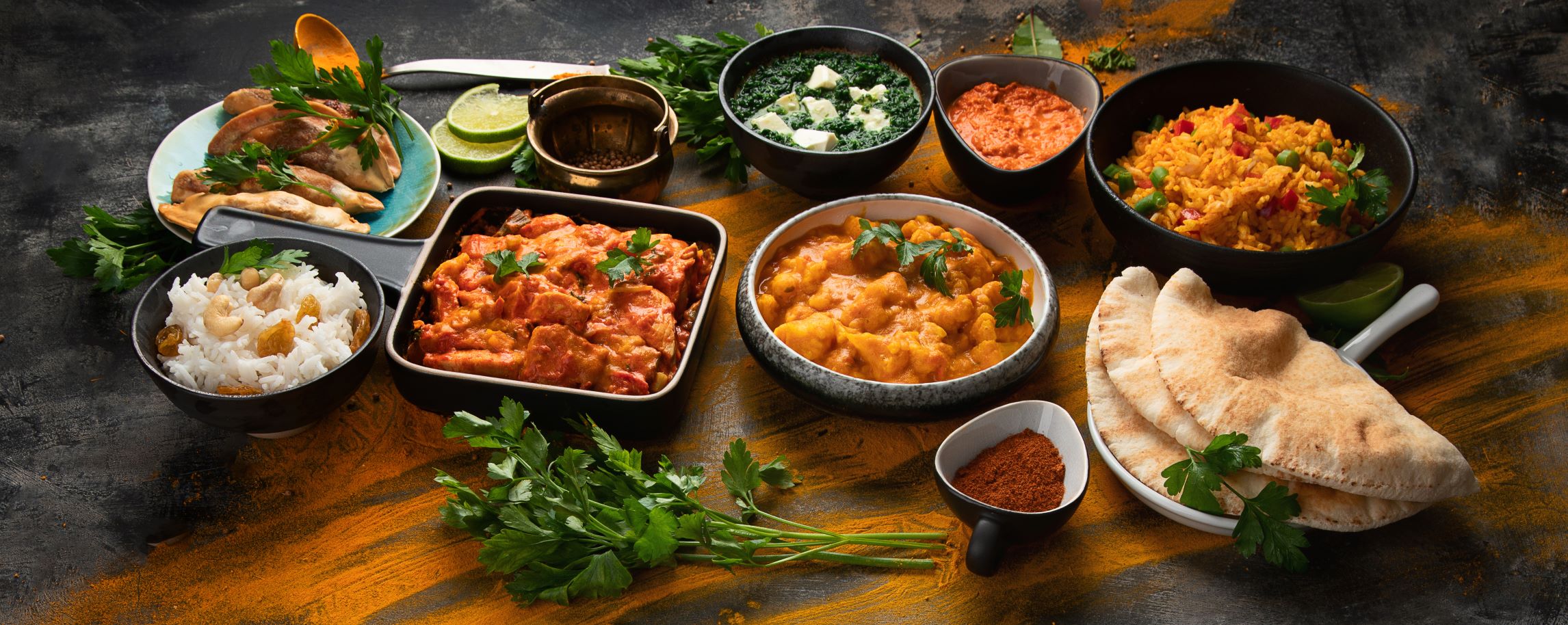When I think about India, one of the first things that comes to my mind is the food. I love Indian curries! Korma, tikka masala, mughlai, bhuna, jalfezi, dhansak, pasanda, rogan josh, makhani – the list goes on and on. Of course, you must have a naan to go with your curry, but do you choose a plain one or a peshwari, kulcha or keema? When you are ordering something as simple as rice, do you go for basmati, sona masuri, seeraga samba or ponni? The name curry comes from ‘kari’, the Tamil word for ‘sauce’ (interestingly ‘cury’ is also medieval English for ‘cooking’) but curries don’t need to have sauce – they can be wet or dry.

The one constant in curries is the presence of spices and other aromatics. There is archaeological evidence that inhabitants of the subcontinent were pounding spices such as cumin, mustard seeds, fennel seeds, and tamarind pods in crude mortar and pestles over 4000 years ago to flavour food. The other key element of curries is their texture. They can be thick and rich from tomatoes, pureed peppers or chillies, or creamy from yoghurt or cream, from nuts or, if from along the coast south of Mumbai, from coconut milk. For those with adventurous palates, the ISHRS 31st World Congress will offer you the chance for a taste escapade!
Even if you don’t leave the hotel, there will be ample opportunity to sample a wide range of Indian food. However, for intrepid travellers, there will be all sorts of options in Delhi to overwhelm your taste buds. This year the Grub Fest, which is one of India’s largest food festivals, was held in Delhi on 4-6 November 2022 so perhaps next year’s dates will overlap with the Congress. Visit this page for more details
If there is one thing you have to do in Delhi, it is to visit a spice market. Some sneeze and cough at the pungency but the sights, sounds and aromas will be unforgettable. No other country grows and consumes as many spices as India. With a wide range of climates and topography, the Indian subcontinent produces well over half of the 109 varieties of spice listed by the International Organization for Standardization.
Have you ever heard of kala namak? Also known as Himalayan black salt, it has a lower sodium content than regular salt but also contains other minerals like iron, calcium, and magnesium. Along with the incredible spice markets, Delhi also has the largest wholesale market of fruits and vegetables in Asia. The Azadpur market is around 80 acres and well worth a visit, as20,000 people enter on daily basis and there are over 3,000 traders!
With all there is to do and see in Delhi, I am hoping that, like so much in India, next year’s World Congress will be bigger than ever.
All the best,
Gregory Williams, MBBS, FISHRS
2023 Program Chair